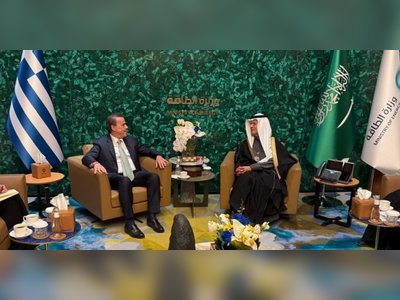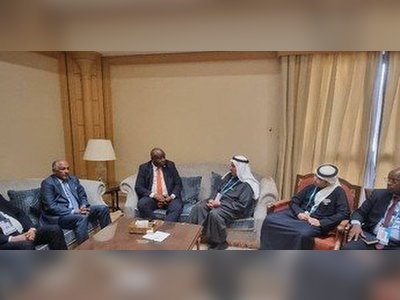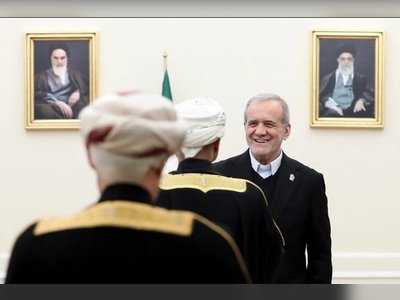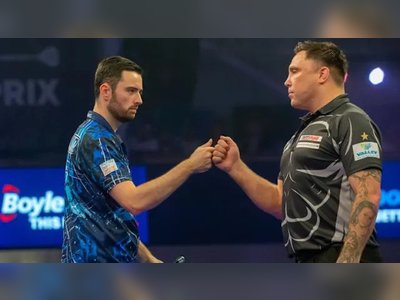
Do you have a lost twin?
As a child, Jeffrey Craig had recurring dreams that he had an identical twin.
"The dreams were frequent, and always the same. There was another version of me lying in bed beside me. It wasn't a stranger: I knew that it was another me. It was a bit surprising, but I wasn't scared – it was actually soothing."
During his research as an associate professor at the Murdoch Children's Research Institute in Australia, Craig learnt about "vanishing twin syndrome", whereby one twin dies early on in the pregnancy. Remnants of that twin may remain in the womb, or the tissue may disintegrate and the cells be absorbed by the other twin or the placenta. Reading about this, Craig began to question whether the dream had more significance.
"I began to wonder if I had a distant memory of sharing a womb with a twin," says Craig, who is now a lecturer in epigenetics and cell biology at Deakin University School of Medicine and deputy director of Twins Research Australia.
Recent research on vanishing twins, in which Craig was not involved but which he peer-reviewed, may help solve his mystery. A global team of twin researchers have discovered a way of finding out if someone was once an identical twin – regardless of whether their other twin is still alive, or was lost before they were born. The method's accuracy is about 60-80%. Craig considers it a major advance in the field, and he is also deeply curious on a personal level. If the researchers succeed in developing a reliable test to identify people who lost a co-twin in the womb, "I could test my hypothesis that the dream I had in which there was another me sleeping beside me originated because I started life as a twin," he writes in an email.
The odds of having once been a twin are higher than many realise. The rate of twins among live births is only about 1.3%. But as many as 12% of all naturally conceived pregnancies may begin as twin pregnancies, according to one study. In about one in eight of such pregnancies, one of the twins vanishes, resulting in a single birth, the study suggests.
Those who are left-handed may have an even higher probability, because twins are more likely to be left-handed. While 9% of the general population is left-handed, 15% of identical twins and 12% of non-identical twins are left-handers.
Helping people uncover if they started life as a twin could have important implications for their health, some experts say. It may also contribute to a better understanding of identical twins and their early development – many aspects of which are still shrouded in mystery.
 Identical twins at the Twins Days Festival in Twinsburg, Ohio. Identical
twins form when one egg, fertilised by one sperm, splits
Identical twins at the Twins Days Festival in Twinsburg, Ohio. Identical
twins form when one egg, fertilised by one sperm, splits Mysterious twins
The scientists did not originally set out to develop a test to find out if people had vanished twins. Instead, their initial goal was much more fundamental: to look for differences in the epigenome – meaning, chemical tags that mark the human genome and tell it what to do – that could lead to a better understanding of exactly how and why identical twins form in the first place.
Identical twins, also known as monozygotic twins, form when one egg, fertilised by one sperm, splits early on. Finding an explanation for why the egg splits has proven elusive. The leading hypothesis is that it occurs at random. Identical twins occur in few species: humans, dogs, cattle, horses and pigs. From an evolutionary perspective, their existence doesn't make much sense, since producing offspring with genetic diversity provides a better chance of survival.
"We know so much about the human body, but despite many years of research, we still have no idea where identical twins come from. It's one of the remaining mysteries in human biology," says Jenny van Dongen, an expert in twin research and epigenetics at Vrije Universiteit Amsterdam, who led the study.
The researchers originally wanted to investigate the role of so-called epigenetic processes – that is, chemical markers that sit on top of genes, and can switch them on or off – in the formation of twins. Such epigenetic markers can be added to or removed from genes by the human body in response to changes in a person's environment or lifestyle. The role of epigenetic processes has been studied in fields as diverse as trauma research and cancer prevention. Epigenetic changes have also been found to be essential for early human development, when the embryo is first formed.
In particular, DNA methylation – a process by which a small chemical tag known as a "methyl group" is added to the DNA – helps regulate how embryonic genes function, thereby enabling healthy development.
Identical twins keep a distinctive, lifelong "epigenetic signature", research shows
To find out if different levels of DNA methylation also played a part in the formation of twins, the team analysed levels of DNA methylation in 924 existing DNA samples from identical twins in the UK, Australia, the Netherlands and Finland. They compared this pattern to a control group of 1,033 non-identical twins. This ensured that the two groups were as similar as possible, having both shared a womb with a twin, the difference only being that the identical ones resulted from the split egg.
The researchers found a characteristic pattern of methylation in the identical twins' samples, also known as a molecular signature, or epigenetic signature. When they analysed samples from the same people taken at different points over time, they discovered that this pattern remained stable.
The precise role of this chemical signature in the formation of identical twins is not entirely clear. It could be a kind of chemical scar left by the process of the egg splitting; or it could be what led to the split in the first place.
But as the paper notes, the discovery of this distinctive, stable signature resulted in a never-expected side outcome: because identical twins keep the epigenetic signature all their lives, it can be used to find out if someone was originally an identical twin, even if their other twin was never born.
Using this discovery, the researchers developed an algorithm to predict whether someone is an identical twin, and applied it to fresh data sets. When tested on these data sets, the algorithm's predictions had an accuracy rate of 60-80%.
This means that even decades after their birth, a surviving identical twin could learn of their lost twin's existence through a simple cheek swab.
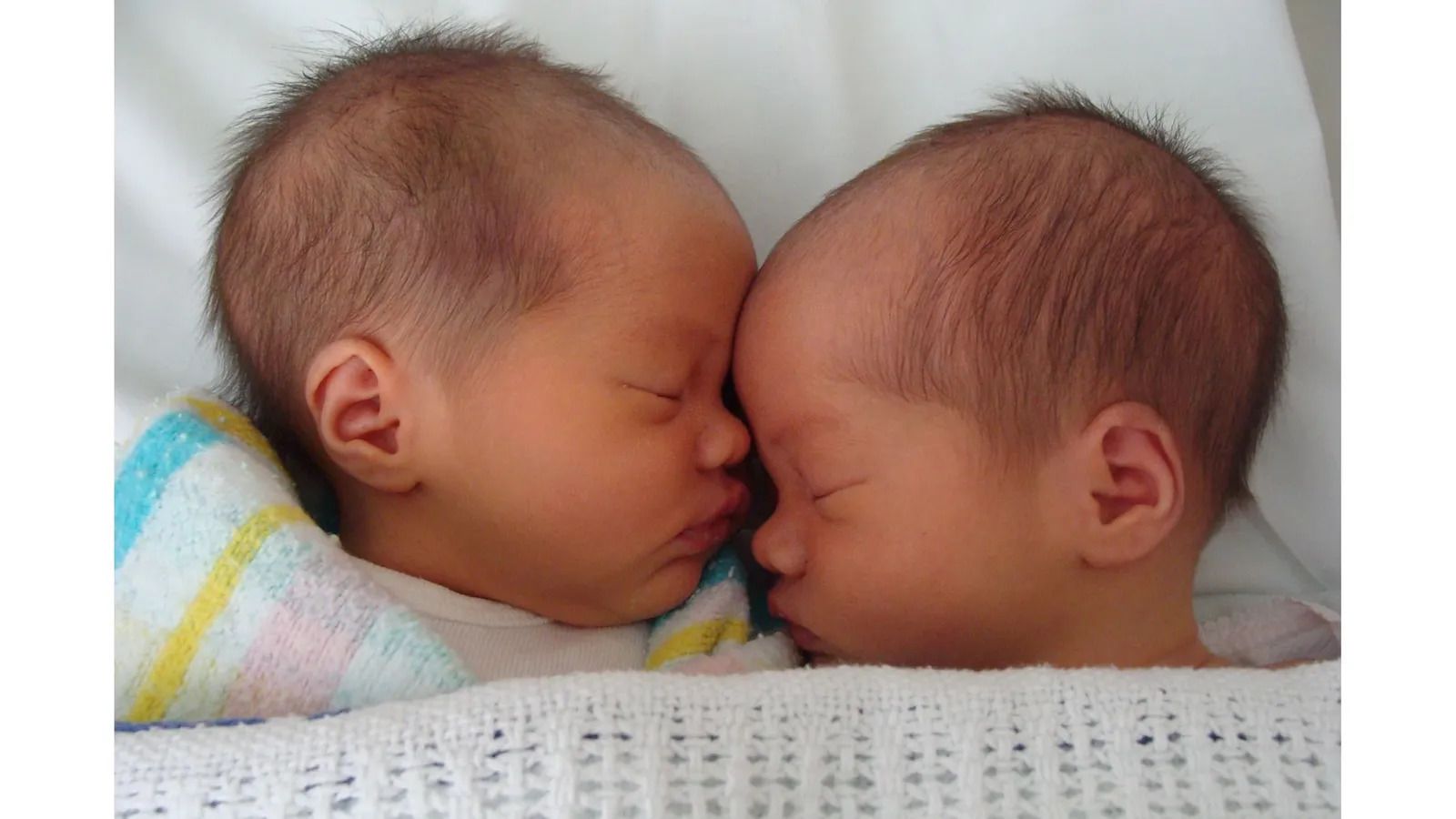 The distinction between identical and fraternal twins is not always
clear. Babies Maddie and Mia were thought to be fraternal, but turned
out to be identical
The distinction between identical and fraternal twins is not always
clear. Babies Maddie and Mia were thought to be fraternal, but turned
out to be identical
"We don't know if the test will ever be 100% accurate, but there are things we can try, such as a more complicated mathematical algorithm," says van Dongen.
The test only applies to identical twins. Non-identical, or fraternal, twins form in an entirely different way, namely, when a woman produces two eggs and each is fertilised by a different sperm. Genetically, this makes them as similar as siblings. The factors that influence the chance of having non-identical twins are much better understood than for identical twins. Older mothers, and mothers from families where non-identical twins are common, are more likely to have them, for example. Ethnicity can also be a factor. The chances of being a non-identical twin are highest among Nigerians, with a rate of 40.2 per 1,000 births and lowest among the Japanese, at 10.45 per 1,000 births.
Lost twins?
The test could shed new light on a range of twin-related scientific questions, firstly by simply establishing much more clearly who is a twin. On an individual level, it could help people struggling with painful uncertainty over their identity, and the possibility of having a lost twin.
"It is a major breakthrough for several reasons," says Nancy L Segal, a psychology professor specialising in twin studies at California State University, Fullerton and the author of a new book on separated twins called Deliberately Divided.
"It offers new insights into the biological processes underlying identical twinning. It helps identify cases of identical twin survivors whose co-twins died at birth. It also allows confirmation of suspected switched-at-birth identical twin cases when DNA testing may not be immediately feasible."
Segal regularly receives emails from people who are searching for their lost twin.
"Some tell me they've been in therapy and realise that the root of their problems is that their identical twin died at birth," says Segal. "They say they feel lost. They are really hung up on it."
Jenny van Dongen, the researcher who co-developed the test, has received around 30 emails from people wanting to take it. In some cases, their mothers said there were signs of a miscarriage during pregnancy. Others simply have a hunch.
She knows that she had a twin. She has dreams about it – Judith Hall
Judith Hall, professor emerita at the University of British Columbia, has been studying twins for 50 years and is considered a world authority in genetics and pediatrics. Her daughter believes she was an identical twin, although Hall herself had no indications at the time.
"She knows that she had a twin. She has dreams about it," says Hall simply.
However, Segal is sceptical about prenatal memories of a lost twin.
"It's a romantic notion," she says. "As a scientist, I remain open to the evidence that it could be possible, but so far I've not seen it. In all the twins I've studied who were raised apart [after being separated at birth] not one of them thought they were a twin. They were as surprised as we were."
When two becomes one
There are various hypotheses as to why a twin vanishes.
"It could be that something is wrong with one fetus, or perhaps the mother doesn't have enough room," says Segal. "The womb was designed for one baby, not two. It could simply be a correction to ensure the health of the twin who survives."
If a twin disappears before 12 weeks, it is unlikely the mother would know because ultrasounds are rarely conducted that early.
"In medical terms, it is called 'vanishing twin syndrome' because at an early ultrasound there are two heartbeats, but later one of them seems to disappear," says van Dongen. "However, those who have lost a twin pregnancy prefer to call it a stillborn pregnancy."
Sometimes there are visible remnants of the other twin. A rare phenomenon known as fetus papyraceus or 'paper doll fetus' describes a mummified fetus that died before the age of 10 weeks. It is flattened between the membranes of the living twin and uterine wall. It occurs in one in 12,000 pregnancies.
"It is like a small piece of parchment that looks like a tiny baby," says Craig, the twin researcher.
An even rarer occurrence is called fetus-in-fetu or a 'parasitic twin', when one twin is absorbed inside the other, and parts of that twin remain in the other.
"Quite often, there's a structure that resembles a spine. And there can be hair and parts of a limb," says van Dongen.
Fetus-in-fetu is extremely rare. It occurs in about one in 500,000 live births and there have been only 200 cases reported globally.
"A person may have a lump somewhere that they only get checked out as an adult. You can imagine how surprising it would be if an x-ray reveals that their twin is tucked away in their abdominal cavity," says Craig.
In the case of non-identical twins, some of the deceased twin's genetic material may find its way into the surviving twin. In a remarkable case in 2015, a man underwent fertility treatments and the DNA in his sperm turned out to be 90% his and 10% that of his unborn fraternal twin. While he and his twin shared a womb, he absorbed some of his twin's cells, effectively becoming a blend of himself and his brother.
The passing of cells between twins or triplets during early development was once considered rare, but is in fact not that uncommon. Around 8% of non-identical twins and 21% of triplets have two blood groups: this makes them a chimera – a fusion of two bodies.
Identical twins – or not?
Even the distinction between identical and non-identical twins may not be as clear as was once thought. For example, it was once believed that identical twins always shared a single placenta, while non-identical twins each had their own placenta.
When Sydney-based digital marketer Claire Chow had an ultrasound at 10 weeks, she was told that there were two amniotic sacs and two placentas, and that she was therefore having fraternal, or non-identical, twins.
But when her daughters, Madeline (Maddie) and Mia, were born, she noticed that they seemed completely alike. Maddie had a rounder face and Mia had a tiny mark on her nose – those were the only differences. As the girls grew older, strangers kept commenting on how "identical" they were. At the age of four, the twins were DNA tested. They are 99.99% identical.
 Twins Maddie and Mia were DNA tested at the age of four, and turned out to be 99.99% identical
Twins Maddie and Mia were DNA tested at the age of four, and turned out to be 99.99% identical
"The girls have a freckle in the exact same spot on the opposite side of their faces. They have opposite squinty eyes. They're both right-handed, but Maddie used her left hand when she was younger," says Chow.
Such mirroring characteristics occur in 25% of identical twins, known as mirror twins. Mirror twins have birthmarks, organs and dominant hands on opposite sides of their body, and one may be left-handed while the other is right-handed.
Identical twins also have one potentially life-saving characteristic: they can have transplants from one another without any need to artificially suppress their immune system. Their bodies generally easily accept each other's parts.
Testing at birth?
Given such important aspects of identical twin-hood, Craig and Segal advocate DNA testing all twins at birth to check if they are identical, or fraternal.
"Some people think that DNA testing twins isn't important, but I think they're misguided. It's a very profound piece of information about your identity," says Segal.
For those who were born as apparent singletons, the prospect of being able to test for hidden twins later in life may transform entire areas of research and healthcare.
Judith Hall is currently trying to secure funding to use the new test on singletons with congenital anomalies such as neural tube defects and arthrogryposis, a group of conditions that affect the joints. Identical twins are more likely to suffer from these conditions, as well as cerebral palsy. It may turn out that singletons with these conditions began their life as an identical twin.
"We do not entirely understand the cause of cerebral palsy," says van Dongen. "If we can determine that a significant number of patients with cerebral palsy used to have a monozygotic twin, then we may find better treatment targets."
Her team published the algorithm so that others can use it.
Craig, who used to dream of a lost twin, plans to take the test when the accuracy rate improves.
"I think I would have liked to have had a twin," he says. "I was the eldest child in my family and I wasn't a naturally social person. I remember hiding behind the cubby house when I was in kindergarten. Maybe I would have been more social if I'd had a twin, because having a twin teaches sociability."
However, he still feels ambivalent about the idea of finally having an answer: "The question is, what would it mean for me? And for my parents? Would it cause us grief? I've got to really think about whether I want this information. But perhaps it would provide some kind of closure."




